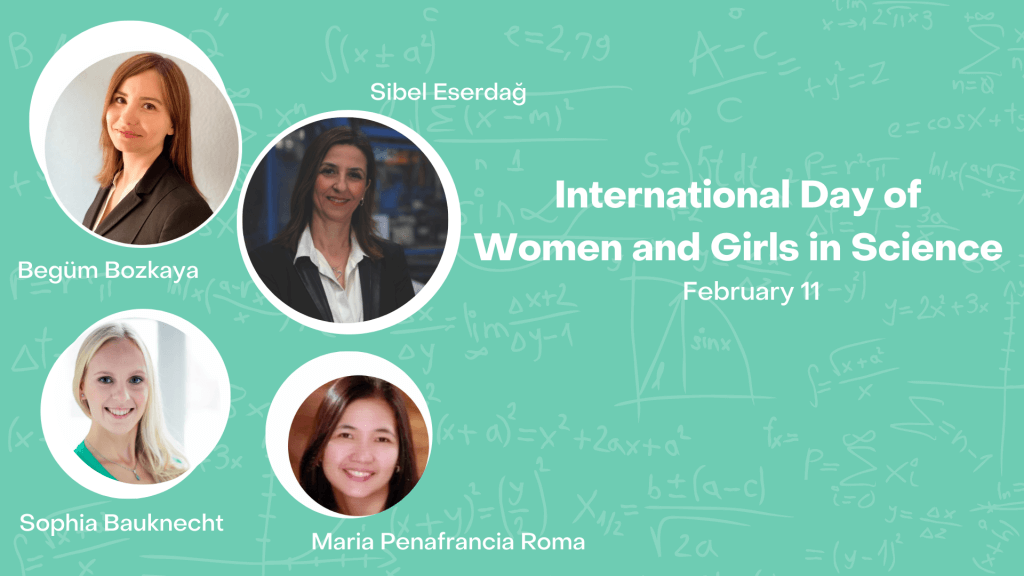
In the words of the United Nations, both science progress and gender equality are fundamental achievements to reach the SDG Goals as part of the 2030 Agenda for Sustainable Development.
For this to become a reality, it is crucial to demonstrate the importance of having more women working in fields of science, and most of all to create conditions that empower and facilitate women to work in a sector traditionally dominated by men.
In 2015, the UN General Assembly declared February 11 as the “International Day of Women and Girls in Science”, as a way of fostering change in this field and turning these below stats around:
UN data from 2021
In this case, and like in any other sector, combining the strengths of all genders in the workplace can only create more space for better ideas, innovation, and progress in science.

Why is it so important to value women in science, but also in our industry in particular?
To better understand these issues and to see how they can be applied in our own industry, CBI spoke to four women who work in the global lead battery industry as researchers: Sibel Eserdağ (R&D Division Manager in Inci GS Yuasa), Sophia Bauknecht (Engineer at Technische Universität Berlin), Begüm Bozkaya (Technical Manager at CBI) and Maria Penafrancia Roma (Technical Collaboration Leader at Advanced Battery Concepts).
The idea was to show their perspectives, as women who work in mostly male environments, but more than that, to demonstrate why they are still working for the industry, why they believe their talent is crucial for it and why do they invite more women to join them in this challenging world.
According to the previously mentioned data, “women represent only 33.3% of all researchers” but considering the technological growth and the urge for progress and innovation in science and research, our group of four women agreed that is absolutely “crucial” to have more female researchers. Not only because of gender equality issues, but also due to the fact that it can bring more diversity of thinking which can only enrich the working groups, their talents and potential to do better things for the industry.
Sophia shared her thought:“that only with a higher number of female researchers it is possible to fully use the existing innovation and talent potential within a research area” and Maria noted that an “increased number of female researchers worldwide means that women with equal or even better capabilities are being given more opportunities now than in the past”. This will hopefully have a significant impact on other areas of the world, she continued: “this will mean that low and middle-income countries will see more women working on scientific and technological issues that can uplift their quality of life. Diversity and statistics will always lead to more revolutionary ideas that can change the world”.
What do women bring to science and to our industry?
According to Begüm, in many research areas “women face new challenges to meet the goals and targets in all levels of science”. Therefore, there’s a common “need” to provide a broader range of understanding and creativity:
“Encouraging the participation of women is essential, as men and women bring different perspectives to research and innovation. The diverse research groups in both academic and industry should combine various skills and abilities”.
But let’s be clear, “women can generate the same ideas and deliver similar results as any other gender in the room”, continues Maria. However, “there is a dearth of examples of this happening in the lead battery industry right now”. As Sibel highlights “like men, women bring their passion, patience, hard work and energy to the science and industry. But the important thing that women bring to science and industry is “diversity”:
“The lead battery industry seems to be a male-dominant industry from the outside however, it is proven by many articles and researches that diversity leads to innovation, so for innovation, industry and science we need more gender-balanced workforce.”
One thing is for sure, there’s a lot of admiration amongst women within the industry as they bring not only the obvious empowerment to each other, but also their perspectives, different backgrounds, skills and visions that add “a considerable value” to the industry, according to Sophia.
So, what advice would you give to a young female researcher starting/considering a career in the lead battery industry now?
We could not end this article without mentioning and promoting other women who are relevant references for our interviewees such as Dr. Kathryn R. Bullock, “whose vision, research and leadership led to revolutionary changes in the lead battery industry. She was a giant among men and the only female recognized by the Gaston Plante Award Committee in its 32 years of existence” (mentioned Maria) and Dr. Julia Kowal, a professor at TU Berlin who is “highly engaged in many committees to represent women in every aspect. She is carrying this additional workload to support other women in their academic career” (stated Sophia).
It's February 2022 when the “International Day of Women and Girls in Science” happens and CBI would like to celebrate every talent who is aiming to be a part of this exciting future for research and innovation, especially in the lead battery industry!